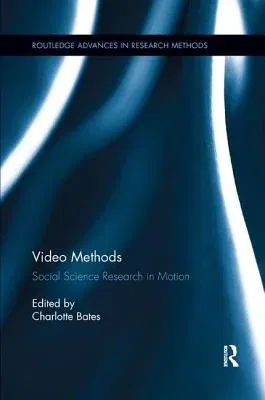Video Methods: Social Science Research in MotionPaperback, 23 August 2018

Qty
1
Turbo
Ships in 2 - 3 days
Only 1 left
Free Delivery
Cash on Delivery
15 Days
Free Returns
Secure Checkout

Part of Series
Routledge Advances in Research Methods
Print Length
246 pages
Language
English
Publisher
Routledge
Date Published
23 Aug 2018
ISBN-10
1138393215
ISBN-13
9781138393219
Description
Product Details
Book Format:
Paperback
Country of Origin:
US
Date Published:
23 August 2018
Dimensions:
22.86 x
15.24 x
1.37 cm
ISBN-10:
1138393215
ISBN-13:
9781138393219
Language:
English
Location:
Oxford
Pages:
246
Publisher:
Weight:
344.73 gm